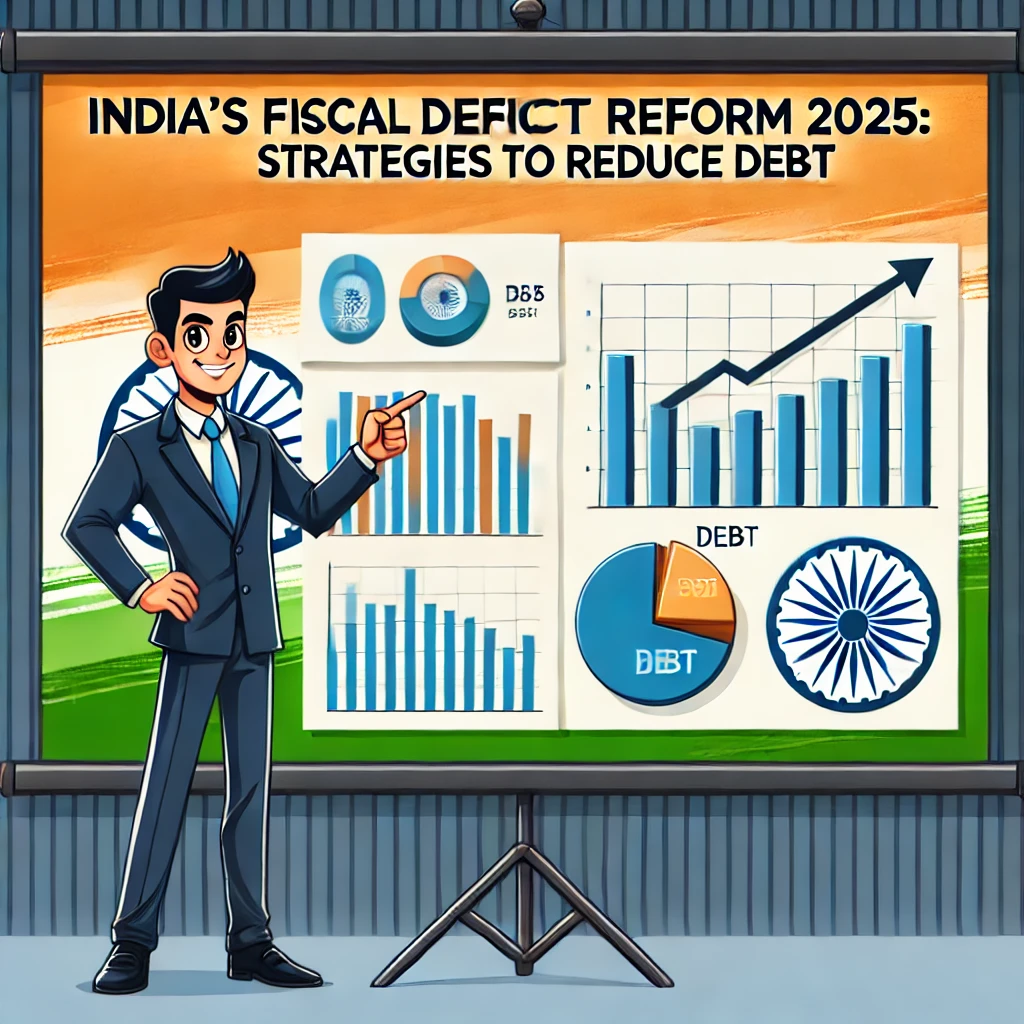Introduction: India’s Fiscal Reforms & Digital Finance Future
India’s bold 2025 fiscal deficit reforms aim to slash debt while creating opportunities for digital wallet adoption and financial inclusion. With plans to reduce the deficit to 4.4% of GDP, the government is balancing tax cuts, infrastructure spending, and debt management—all of which impact India’s finance sector and digital payment ecosystem.
Key reforms include:
✔ Higher tax-free income limits (up to ₹1.28M)
✔ ₹11.21T infrastructure push (roads, energy, digital systems)
✔ Debt-to-GDP reduction (57.1% → 50% by 2031)
How Fiscal Reforms Will Shape India’s Digital Finance Growth
1. Tax Cuts Fuel Digital Wallet Spending
- Higher disposable income = More UPI/wallet transactions
- Projected 18% rise in digital payments by 2026 (Reuters)
- Small businesses benefit from GST simplification
2. Infrastructure Push Supports Fintech Expansion
- 5G & broadband upgrades enable faster wallet transactions
- Smart cities to drive contactless payments
3. Subsidy Reforms & Direct Benefit Transfers
- ₹3T+ savings from streamlined subsidies
- More DBTs via UPI/wallets reduce leakage (Financial Times)
Key Fiscal Strategies & Digital Finance Impact
| Reform | 2025 Target | Finance Sector Impact |
|---|---|---|
| Tax Threshold Hike | ₹1.28M tax-free | Boosts consumer wallet spending |
| Infra Spending | ₹11.21T | Enables fintech in rural areas |
| Debt Reduction | 57.1% → 50% | Lowers borrowing costs for NBFCs |
Challenges: Balancing Growth & Fiscal Discipline
⚠️ Revenue Risks: ₹1T annual loss from tax cuts
⚠️ Growth Dependency: Needs 6.5%+ GDP growth
⚠️ Inflation Control: Essential for stable digital transactions
Solutions:
- Wider tax net via PAN-UPI linking
- AI-driven GST compliance (Economic Times)
FAQ: Fiscal Reforms & Digital Finance
Q: How do tax cuts help digital wallets?
A: More disposable income = higher UPI transactions.
Q: Will infra spending boost fintech?
A: Yes! Better connectivity enables rural wallet adoption.
Q: Risks for finance sector?
A: If growth slows, NPAs may rise in digital lending.
Conclusion: A Stronger Financial Future for India
India’s 2025 fiscal reforms promise:
✅ More wallet-based transactions
✅ Stable digital lending environment
✅ Inclusive finance via DBT reforms
Discover more on INDwallet.com
Frequently Asked Questions
| Question | Answer |
|---|---|
| What is India’s fiscal deficit target for 2025-26? | The government aims to reduce the fiscal deficit to 4.4% of GDP by March 2026, down from a current estimate of 4.8%. (Reuters) |
| How has the personal income tax structure been modified? | Individuals earning up to ₹1.28 million annually are now exempt from income tax, compared to the previous threshold of ₹700,000, aimed at boosting disposable income and consumer spending. (Reuters) |
| What is the planned capital expenditure for 2025-26? | The budget allocates ₹11.21 trillion (3.1% of GDP) for capital expenditure focused on infrastructure development, including transportation, energy, and digital systems. (India.gov.in) |
| How does the government plan to finance the fiscal deficit? | The government plans to borrow ₹14.82 trillion from the market in 2025-26, a slight increase from the current year’s borrowing of ₹14.01 trillion. (Reuters) |
| What long-term debt management goal has been set? | The long-term objective is to reduce the central government’s debt-to-GDP ratio to 50% by March 2031, down from the current 57.1%. |
| What challenges might impede achieving these fiscal targets? | Key challenges include ensuring robust economic growth amid global uncertainties, balancing revenue shortfalls from tax cuts, and managing expenditure pressures in essential social sectors like healthcare and education. (AP News) |
| How will these reforms stimulate economic growth? | The reforms aim to boost growth through increased capital expenditure on infrastructure, tax adjustments that raise disposable income, and initiatives to attract private investment. (India.gov.in) |
